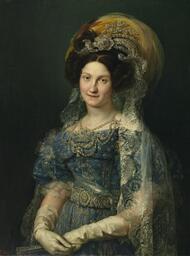 S.R. Crockett’s “The Firebrand” is a rip-roaring historical romance set in Spain during the 1830s when Maria Christina was Queen Regent. Scots-born Rollo Blair, the “firebrand” of the novel’s title, accepts a mission impossible. This to bring the Queen Regent (and her daughter, Isabel) from her summer palace on a journey through a Spain ripped apart by civil war. Will Rollo succeed against all odds? Crockett handles his hero’s repeatedly likely demise with typical assurance. “The Firebrand” is particularly strong on dramatic last-minute rescues! Yet episodes of high drama are movingly juxtaposed with moments of contemplative tenderness. Most moving is the discovery of the body of a four year old plague victim by La Giralda, the old gipsy woman who accompanies Rollo, and the her subsequent laying of a wooden doll in the dead child’s hands. The novel’s opening is a terrific tease. The reader assumes Ramon Garcia, the protagonist in chapters 1 and 2, is “the firebrand”, whereas he is only another member of Rollo’s party, Rollo only appearing in chapter 3. The novel’s ending has half a dozen clever twists with the title of the final chapter (“Ave Concha Imperatrix”) attesting, yet again, to the enduring appeal of “strong” female character to Crockett. Crockett brings the novel’s many characters to life but, with the exception of Rollo and his beloved Concha, they remain little more than one-dimensional. Rollo becomes more measured in his actions as the narrative progresses. Crockett uses Rollo’s other male companions to provide positive behaviour models, in particular Sergeant Cardono – aka José Maria of Ronda (a figure akin to Silver Sand in “The Raiders” and other Crockett novels). From the outset Concha is conscious of her sex appeal and exploits it unashamedly (latterly, of course, solely on behalf of Rollo!). As Crockett’s plot unfolds, circumstances provide Concha with opportunities to display her good sense, reliability, resourcefulness and courage. The lovers’ most tender moments are at times of great adversity – when Rollo and his party are completely surrounded at the Queen Regent’s summer palace and when Concho, unprotected against the plague, accompanies Rollo in collecting bodies for the death-cart. Crockett’s superb description of the plague conveys its horror compellingly. “Hands off”, thunders Rollo when he stumbles and, in steadying him, Concha’s fingers almost touch the cart’s contents. “Concha Cabezos, how dare you come hither?” he shouts. Her answer utterly confounds him: “Rollo, I came because you dared.” Crockett is a master of every genre he tackled. How would he have managed a western? The outlawed Ramon Garcia gains the sobriquet of El Sarria. Crockett describes him as “the man without a friend” (shades of the spaghetti western here!). On the basis of two of the last minute rescues in “The Firebrand”, Crockett would have no problem with the 7th Cavalry coming over the hill in the nick of time. Crockett’s descriptions of Spain evoke the landscape of Sergio Leone movies. How would Crockett have dealt with the indigenous Indians? Probably in the same balanced way he deals with the gitanos, the Spanish gypsies. On the one hand, they constitute a mob intending to kill everyone and plunder; yet, individually, they represent a significant force for “good” throughout the novel, notably the Sergeant, La Giralda and the remarkable Concha who admits to El Sarria that she has gipsy blood. Review by Stewart Robertson.
0 Comments
Leave a Reply. |
AboutSharing the love of Crockett's Books, members reviews Reviews
All
Archive
November 2019
|


 RSS Feed
RSS Feed
